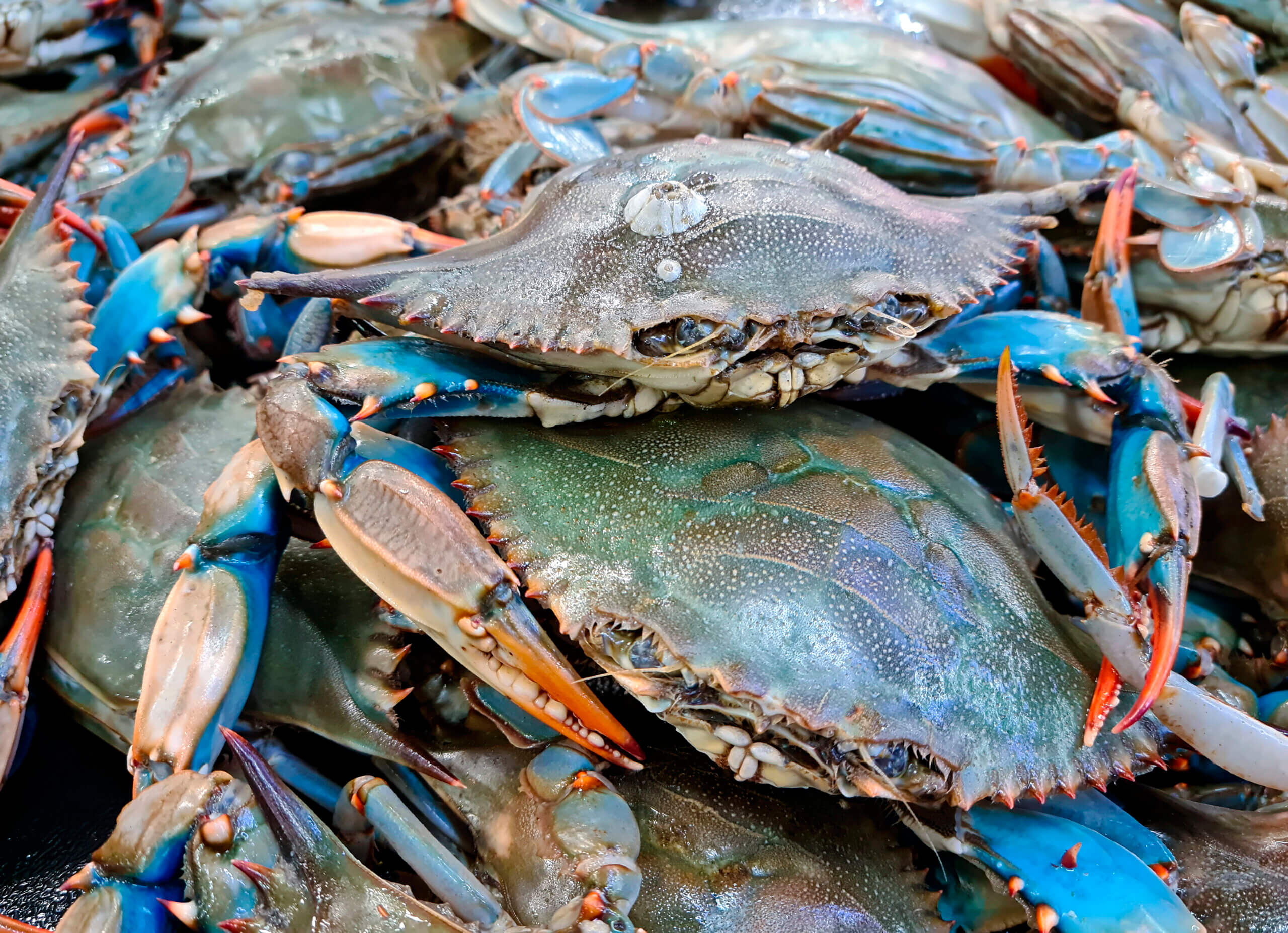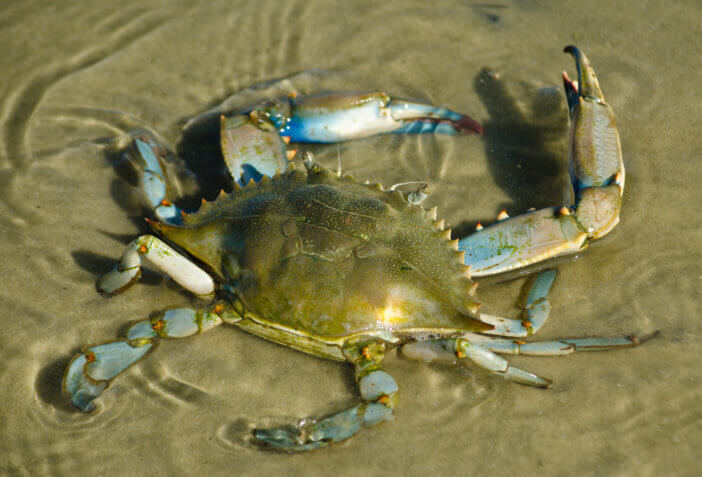5 Causes of Blue Crab Population Decline and How to Help Save Them
Blue crabs are scarce due to overfishing, habitat loss, climate change, water quality issues, and inadequate fishing regulations, threatening their population in the Chesapeake Bay ecosystem.

The blue crab, a keystone species in the Chesapeake Bay ecosystem, plays a vital role in maintaining the ecological balance. However, various factors have led to a significant decrease in their population this year. In this blog post, we delve into the top 5 reasons why blue crabs are scarce this year.
Disclosure: As an Amazon Associate, this site earns from qualifying purchases. Thank you!
1. Overfishing

Overfishing is one of the primary causes contributing to the dwindling population of blue crabs. The Chesapeake Bay is responsible for more than one-third of the nation’s blue crab catch. The demand for these crustaceans has led to increased harvest pressure, leading to a significant decline in their numbers.
From the mid-1990s to the late 2000s, this pressure caused a dramatic reduction in the blue crab population. The phenomenon known as ‘recruitment overfishing’ was primarily blamed for this. Recruitment overfishing occurs when large removals of adults result in fewer juveniles being produced.
In efforts to curb overfishing, authorities have implemented several measures. For instance, the Chesapeake Bay Program developed its first Chesapeake Bay Blue Crab Fishery Management Plan in 1989. The plan promotes collaboration among Maryland, Virginia, and the Potomac River Fisheries Commission, the three jurisdictions that manage commercial crabbing in the watershed.
2. Habitat Loss

Habitat loss is another significant factor affecting the blue crab population. Blue crabs use underwater grass beds and marshes as nurseries, feeding grounds, and refuges from predators. However, these habitats are fast disappearing due to various reasons such as coastal development and polluted stormwater runoff.
The decline in underwater grass abundance, due to warming waters, irregular weather patterns, and pollution, has been linked to declines in the blue crab population. Underwater grass beds and marshes are essential for increasing juvenile blue crab survival and growth rates. Research has shown that denser underwater grass beds can hold more crabs, indicating both the quantity and quality of underwater grass habitat can affect blue crab populations.
Conservation efforts are underway to protect these habitats. One way individuals can help is by protecting underwater grasses. Boaters should follow posted speed limits and no-wake laws to avoid harming underwater grass beds and steer clear of grasses growing in shallow waters.
3. Climate Change
Climate change poses a significant threat to the blue crab population. Rising temperatures and marine heatwaves can have a detrimental impact on the lifecycle and reproductive patterns of blue crabs. The alteration in seasonal patterns can disrupt their mating season, leading to a decline in their numbers.
Moreover, climate change results in ocean acidification, which can affect the health and survival of blue crabs. It makes it difficult for them to form and maintain their shells, thus making them more susceptible to predators and environmental stressors.
Scientific research is ongoing to understand the full extent of climate change’s impact on blue crabs and the marine ecosystem as a whole. This knowledge will be crucial in developing strategies to safeguard these important marine creatures from the adverse effects of climate change.
As Chesapeake Bay Program explains in the video –
Chesapeake Bay Program
- Climate change causes warming and acidification of the ocean, which impacts blue crabs.
- The Chesapeake Bay is a model for understanding climate impacts on estuaries.
- Blue crab populations in the Chesapeake Bay have declined dramatically in recent decades.
- Experiments are being done to study effects of increased temperature and acidity on blue crab growth rates.
- Blue crabs grow by molting; slower molting indicates slower growth.
- Experiments found crabs in more acidic water had longer times between molts and grew slower.
- Higher future temperatures may prevent crabs from overwintering and growing year-round.
- Slower growth rates could be counteracted if crabs can grow year-round from warmer winters.
- The data can help predict future crab populations and guide management.
- The goal is to provide information to help manage blue crab populations amid climate impacts.
4. Water Quality

Water quality plays a crucial role in the survival and growth of blue crabs. They require clean water to thrive. However, agricultural runoff and pollution have severely impacted water quality in many areas where blue crabs live.
Runoff from farms often contains harmful chemicals and excess nutrients, which can cause algal blooms. These blooms deplete the oxygen levels in the water, leading to ‘dead zones‘ where most marine life, including blue crabs, cannot survive. Pollution also introduces harmful substances into the water, which can be lethal to blue crabs.
Efforts to improve water quality are essential for the survival of blue crabs. This includes reducing agricultural runoff, improving wastewater treatment, and implementing stricter pollution control measures.
5. Fishing Regulations

Fishing regulations are crucial for managing the blue crab population. If not properly enforced, overexploitation can quickly decimate their numbers. But these regulations are only as effective as their enforcement.
The Chesapeake Bay Program has set minimum catch sizes and seasonal harvest limits to control fishing pressure on blue crabs. However, illegal fishing activities and non-compliance with these regulations can undermine these efforts, leading to overfishing and a decline in the blue crab population.
Strengthening the enforcement of fishing regulations is critical for preventing overexploitation. It is equally important to increase public awareness about these regulations and the importance of adhering to them for the long-term sustainability of the blue crab population.
Numerous factors, such as predation, disease, and fluctuating food resources, affect blue crab numbers. A comprehensive strategy involving research, legislative reform, and personal responsibility is crucial for the preservation of this important species for future generations.






